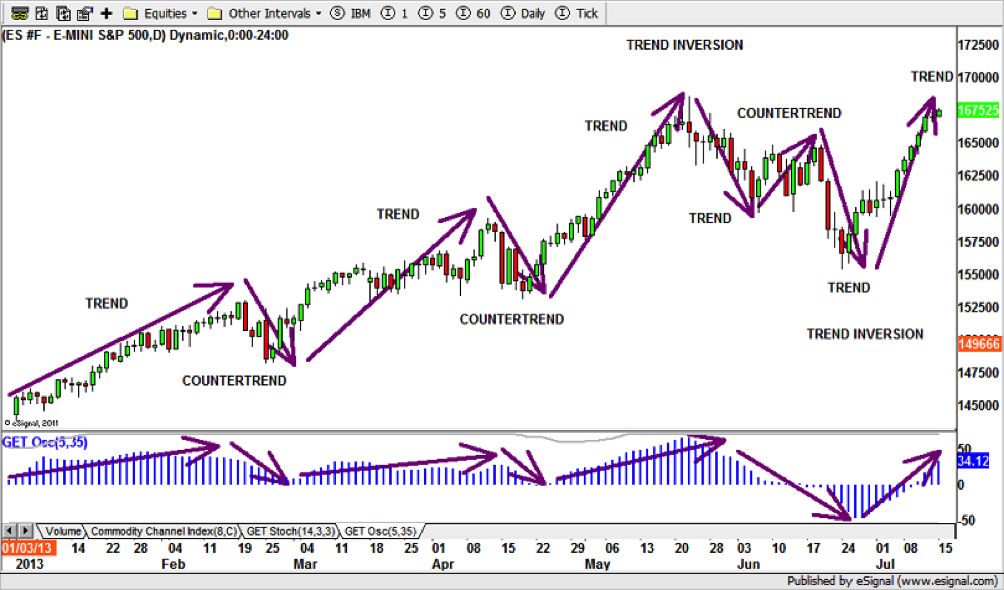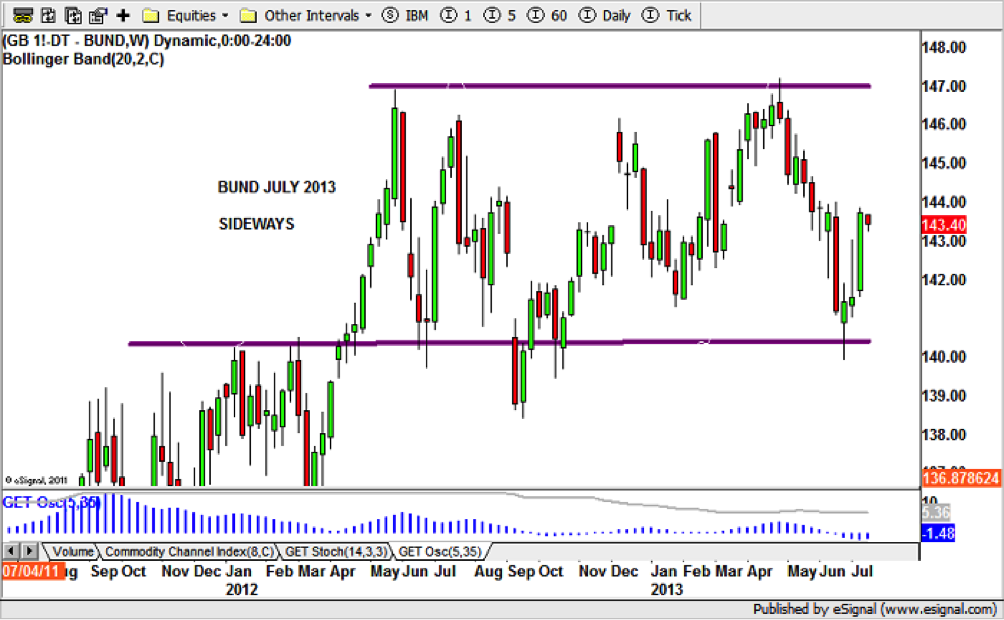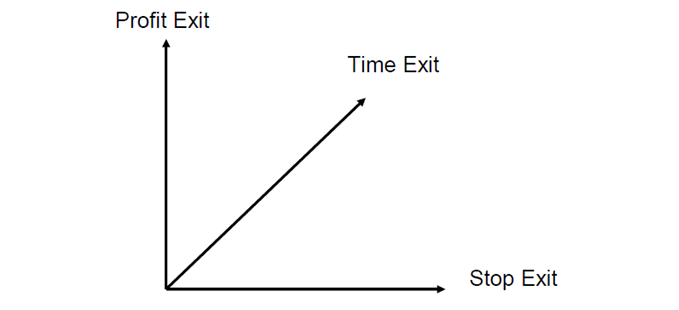Methodology
With this approach the goal is to take positions where risk is limited compared to the reward it can be achieved, therefore I look for
Asymmetry in the results I can generate
How the goal is achieved?
Diversification
Diversification is achieved:
- By instruments: futures, stocks and etfs.
- By asset classes: equities and equity related, commodities and bonds (last one only via futures or etfs).
- By geographic extension: (US, Europe, Latam and Asia).
- By time frame: trades are exploited in a multi time frame environment ( 60 min, 240 min, daily, weekly and monthly).
- By trend directions: in normal conditions not all the above instruments trend in the same direction at the same time.

Trend recognition
Trend trades: wider in time and price.
Countertrend trades: limited in time and price.

No Trend: typically no trades or countertrend type of trades

Multi time frame trades
Trades can be exploited in a multi time frame environment due to:
- Fractal theory: A fractal is "a rough or fragmented geometric shape that can be split into parts, each of which is (at least approximately) a reduced-size copy of the whole,"a property called self-similarity.
- Technical indicators: such as MACD, Stochastic and Fibonacci. If those indicators (as an example) are not violated, trend is intact. Otherwise a new trend is in formation.
Risk Management
Risk Management is involved in the following areas:
- Constant review of the fear factors:
- VIX Index (historical range 14-18: a red light is on when below 14 and above 18)
- Bund / US Treasuries as flight to safe heaven (yield vs. inflation)
- Size limits of each position on overall portfolio in terms of stop loss dollar amount.
- Active money managment to constantly revise overall fixed total market risk accepted.
- Rigourus execution of three dimensional exits.
How a position is taken
Constant monitor all the mentioned instruments for signals, either through software screeners or human generated signals.
Once highlighted a possible candidate, a first 25% of the full size is allocated with a stop loss.
As the position goes in my favour, incremental 25% is added on retracements until full 100% is reached, with stop losses moved to break even.
A monetary stop loss is allocated first and then calculate position sizing backwards.
$$ Stop loss → % Stop loss → Size of position
How a position is exited
Exits are three dimensional:
